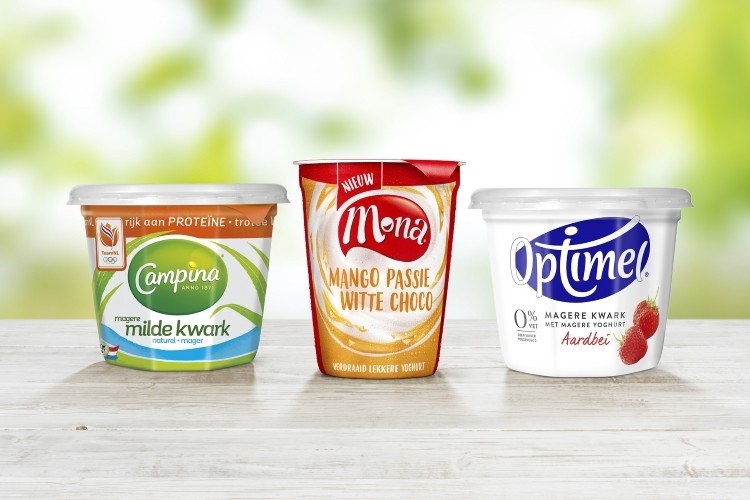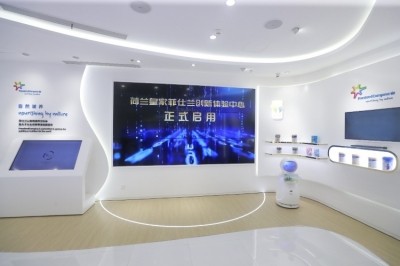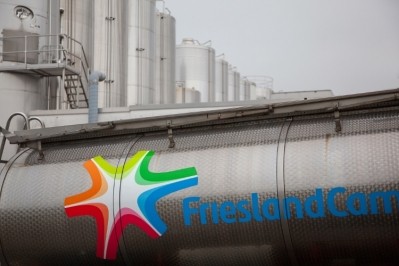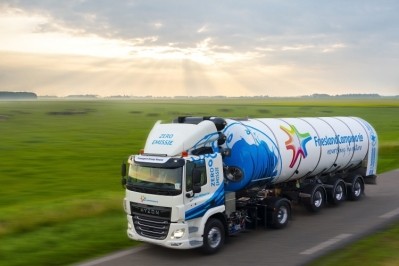FrieslandCampina switches labels to make cups recyclable

Currently, the products adopting the new innovation are yogurt and soft curd cups from the brands Campina, Optimel and Mona (450g and 500g).
The solution developed by the Dutch cooperative’s R&D department results in more than 400,000 kilograms of cups becoming recyclable. Following the recent introduction of 100% recycled PET bottles, FrieslandCampina said this is the next step towards circular packaging.
Previously, the cups could not be recycled as a whole, because during the waste sorting process the machines did not recognize the label around the cups as recyclable.
Patrick van Baal, global director packaging development at FrieslandCampina, said, “Now we have found a solution for this. With the new labels around our yogurt and soft curd cups we make sure that these packages are correctly recognized and sorted for recycling in the existing recycling processes and do not end up in the residual waste flow for energy recovery. The cups can now be recycled for new applications.”
One of the objectives of FrieslandCampina’s Nourishing a better planet sustainability program is to make better packaging that is 100% circular and CO2-neutral, while minimizing the amount of packaging material.
Van Baal said, “For FrieslandCampina making over 400,000 kilos of cups recyclable clearly contributes in making our entire packaging portfolio reusable and/or recyclable in the year 2025.”
He added the new plastic labels make sure that cups can be better sorted for recycling.
"After the cups have been discarded, they go to a sorting center," van Baal explained.
"Such a center sorts all different types of materials for recycling, like cans, bottles and drink cartons. The sorting is done by machines and the sleeves that used to be put around the cups made the cups ‘invisible’ for the machines. Therefore, the cups ended up in the residual waste flow for energy recovery. The new sleeves make sure that the machines do recognize the cups, so that they can be recycled. Here it remains important that the aluminum foil is completely removed from the cups to help the process."








